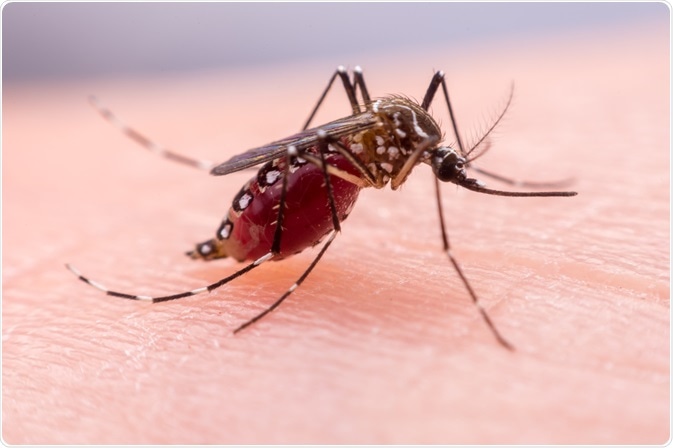Recent outbreaks of the Zika virus, a disease-causing pathogen that leads to fever, headaches, a rash, joint pain, conjunctivitis and muscle pain in 20% of the people who become infected, are shedding more light on how the virus is transmitted.
The disease has become more visible due to large outbreaks of infection in South America. Healthcare providers are detecting a link between the infection in pregnant women and the birth defect microcephaly in newborn babies.
.jpg)
Image Credit: Kateryna Kon / Shutterstock
Microcephaly results in infants having a reduced head size and brain damage. In adults who have had the infection, there have also been reports of a rise in Guillain-Barré syndrome, a disease that affects the nervous system. This can lead to paralysis and occasionally death.
Scientists are investigating the effects of the Zika infection in more detail, how it is transmitted and the long-term effects of infection. A person with suspected Zika infection should always visit a healthcare provider for confirmation and to rule out other diseases that have a similar effect.
Mosquito transmission
The Zika virus is spread between humans through Aedes mosquitoes who feed on an infected person’s blood and pass the infection on to another human. There are two types of Aedes mosquitoes – the aegpti and the albopictus, both of which are very active in the day and also bite at night. The females of these mosquitoes are the ones that bite and spread diseases. Both types are recognizable by the white stripes on their legs.
The virus can be incubated in the mosquito for eight to ten days and has the potential to transmit it until it dies. There is also the possibility that the mosquito passes the virus on to its own eggs.
Both mosquito types like to lay their eggs in or near stagnant water. Containers used by humans have been found to have the eggs and larvae of mosquitoes in them.

Image Credit: Surachai Pung / Shutterstock
Transmission through human secretions
The Zika virus can also be transmitted through humans while they have the symptoms of the disease. A person who has signs of conjunctivitis can pass on the virus from their runny eyes and so should be careful to clean their hands after touching their eyes.
There is also evidence developing that the disease can be transmitted through sexual activity. Two cases have been reported of men passing on the virus to their partners. In one case, the infected male had not yet developed symptoms. The virus has been detected in semen at least two weeks after symptoms of the disease in the carrier.
Men and women who have the virus are advised to either abstain from sexual activity or use a condom for vaginal, anal or oral sex. Women who are the partners of men who have been infected or have traveled to a region where there is a high rate of infection should inform their healthcare provider so that their health can be monitored due to the risk of microcephaly for the developing fetus.
Transmission from pregnant mother to developing baby
The Zika virus is believed to be able to pass through the placental barrier between the mother’s blood system and the developing fetus. The virus has been found in newborn babies. In countries where there has been an outbreak of the disease, a higher rate of microcephaly has been reported. There is no evidence to suggest yet that the virus can be passed on through breastfeeding.
Transmission through blood transfusion
As the Zika virus can be passed on through blood, some countries are advising that a person who has been in a country or region where there has been a Zika outbreak should not donate blood. There have been some cases of transmission via this route in Brazil.
References:
Further Reading